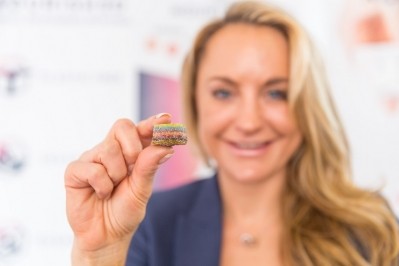‘No such thing as a universally healthy diet’: Meeting individual health needs through personalised nutrition

No two people have the exact same health needs. This is why the industry of personalised nutrition was developed, aiming to create uber-bespoke diets which, in a number of ways, fit the individual like a glove.
However, is it truly possible to personalise a diet? How can it be done?
Investigating individual differences
“There's no such thing as a universally healthy diet,” said Markus Stripf, co-founder of personalised nutrition search engine Spoon Guru at FoodNavigator's Positive Nutrition Digital Summit last month. Every individual is different.
For example, he suggested, “we all have totally unique microbiomes. Even identical twins don't have the same microbiome.”
“I think what is important to acknowledge is there are a lot of inter-individual differences in how people, individuals respond to a food product or a diet,” believes Marjolijn Bragt, program leader for nutrition and health at Wageningen Food & Biobased Research.
At Wageningen Food & Biobased Research, Bragt told us, a number of different avenues of investigation have been taken to ascertain individual differences when it comes to how consumers respond to food and nutrition.
“We conduct studies on how people digest and absorb plant proteins; and what we see is some individuals are very well capable of digesting a protein, while other consumers are not capable, when it's the same protein."
“I think genetics does play an important role, for example you can think of genetics which can influence the abundance or the activity of certain digestive enzymes in the gut. The effect of other factors should not be underestimated, such as for example, age, gender, the background diet that a consumer is already consuming, your microbiome level of physical activity.”
Melissa Snover, CEO and founder of 3D printed gummy brand Nourished, investigates individual differences in nutritional needs through an algorithm in order to ascertain which nutrients Nourished's customers need. This algorithm has revealed the full extent of how extensive a variety of nutritional needs can be.
“At the moment we focus on wearable technology, which automatically feeds data, and phenotyping questionnaires, which give us information regarding the two really biggest topics we can support on day one. [These] are lifestyle - so what is happening on a daily basis that supplementation and nutrition can support or cancel out the negative affects of – and ‘what are your goals?’"

Timo Spring, CEO and founder of AI-based personalised nutrition advice platform Prevess, stressed the importance of precision. “We always start with a small digital health twin of the person. From this point on, we have to define the health goal; because even if we identify certain challenges inside the body, disbalances on nutrients or the gut microbiome, it could be sometimes a mismatch on the health of the person.
“That needs to be somehow aligned. We currently create what we call health protocols, and these health protocols are the starting point. They brings the health goal at the end. Figuring it out based on the latest science, and making regular feedback loops and retests, which allows us then to, even when we have the scientific paper backed information, really understand, on the one on one level if it's really [working]”.
Catering to individual differences
Once one has worked out what individual health needs a consumer has, the process has only just begun. Catering to individual health needs is a complex process.
“It can get very complicated,” said Stripf, whose search platform Spoon Guru aims to find consumers the right products to fit their nutritional needs.
“You may have a health condition you need to manage, but on top you may have specific preferences. If you level this up to a household, you can run into very very concrete problems. The challenge is how do you manage different dietary requirements and make it easy?
“My household, for example: I don't eat meat, my wife has a number of food intolerances. It's very difficult for a retailer for example to respond to that specific need and provide a personalised experience that allows us to find exactly the right foods for our requirements. But fundamentally what we need to do is to balance dietary preferences and health requirements.
“We think technology can play a significant role in effectively being a digital enabler to help people reach better health outcomes through increased transparency, more sophisticated discovery experiences, and better profiling to really understand what the individual needs.”
Giving consumers what they want goes beyond nutrition, according to Prevess’s Spring. Consumers want convenience as well, and without this personalised nutrition is far less likely to work. “I think this is the challenge finding a solution that caters and aligns so smoothly with people that I would say the recommendation becomes more convenient.”
Generative AI, which Spring’s platform uses, is able to process data in a far more efficient way than any human, helping the platform to aim towards providing this convenience. “I think what is important is to use this technology and make it very practical,” he said.
Nourished’s Snover stresses the versatility enabled by 3D printing as a way of providing consumers with nutrition which is nearly unique. The technology “allows for you to combine any seven of 39 different potential nutrients. Then that also allows for you to customise the flavour.
“So in affect we can make billions of different products and each single print is a unique product and we never make the same product twice.
“We've done it for hundreds of thousands of people now, and less than a hundred times has there been an exact duplicate of a product for two customers. So it's super interesting to see that happen when decided by the algorithm.”
Missed any of FoodNavigator’s Positive Nutrition Digital Summit 2024? Don’t worry, you can still access all of our sessions and handouts, which will be available on-demand for the next 90 days. Click here to register for free.
























